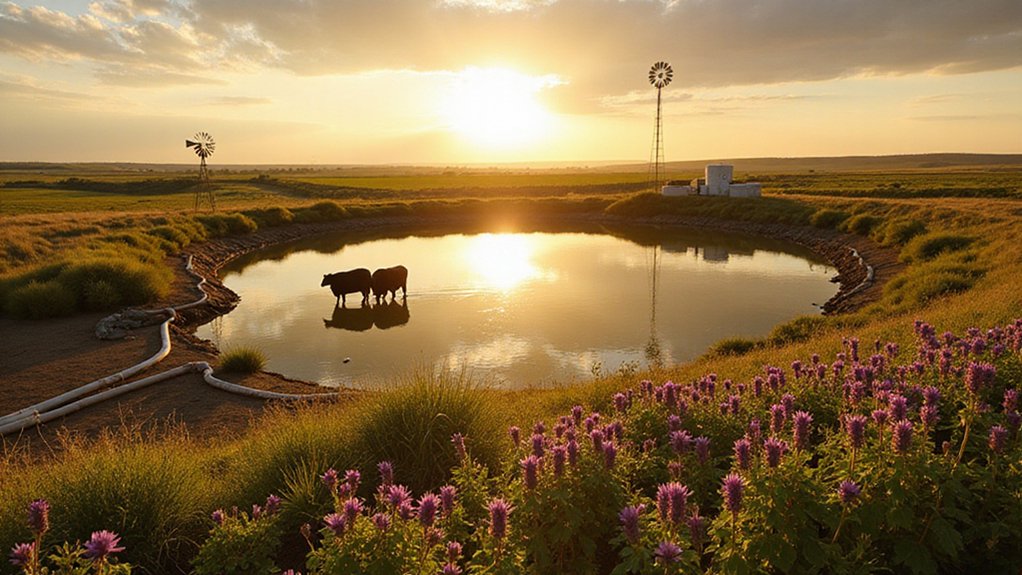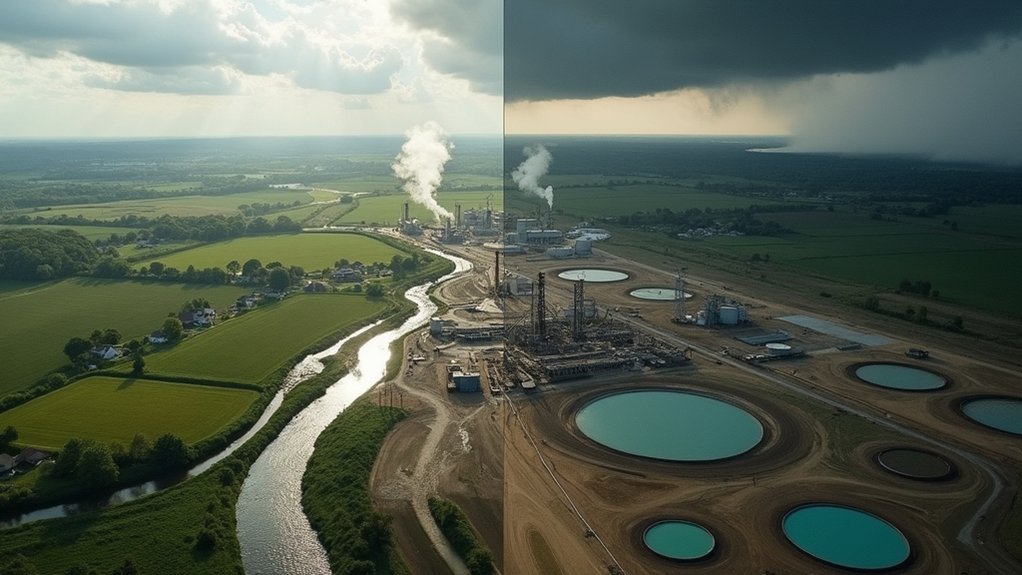Nearly every Oklahoman will feel the effects of the state’s ambitious water conservation efforts in the coming years. As Oklahoma faces decreasing water supplies and increasing demand, officials are taking bold steps to guarantee future generations have access to this essential resource.
Oklahoma’s water future hinges on today’s bold conservation actions as supplies dwindle and demands rise.
The state currently allows over 11,000 permits for the extraction of more than 4 million acre feet of water annually. This high demand, coupled with recurring drought conditions, has prompted lawmakers to revive discussions about stricter water monitoring.
In response to these challenges, Oklahoma established the Water for 2060 Initiative, setting a clear goal: use no more fresh water in 2060 than was used in 2012. This forward-thinking plan promotes various conservation strategies, with water reuse playing a key role.
As of February 2025, Oklahoma approved centralized non-potable water reuse applications. This means treated wastewater can now be used for toilet and urinal flushing, fire suppression systems, and other appropriate uses that don’t require drinking-quality water.
The Oklahoma Water Reuse Action Plan (OWRAP) outlines five fundamental strategy areas for successful water reuse. The plan details drivers, barriers, goals, and actions needed to implement water conservation across the state. Despite severe weather challenges including tornado warnings, attendees of recent water conservation events remained committed to the cause.
Funding represents another significant element of Oklahoma’s water revival. State agencies are coordinating various financing mechanisms to support water reuse treatment and infrastructure, making conservation economically viable for communities and businesses.
Public engagement stands at the center of these efforts. Through educational initiatives and awareness campaigns, state agencies help citizens understand water’s value. Senate Bill 259 includes compliance penalties for incorrect water usage reporting to ensure accurate tracking and responsible management. The popular “In the Water” podcast featured discussions about these issues in May 2025.
The OWRAP establishes a collaborative framework involving multiple stakeholders, interagency cooperation, and public-private partnerships. As the Work Group meets periodically to update the plan, their efforts guarantee Oklahoma can meet its water conservation goals.
Oklahoma’s approach demonstrates how a state can transform its relationship with what officials describe as “one of the state’s most precious resources.”
References
- https://www.youtube.com/watch?v=8GorxOEurxs
- https://www.deq.ok.gov/asd/drought-and-water-conservation-information/
- https://www.epa.gov/waterreuse/summary-oklahomas-water-reuse-guideline-or-regulation-centralized-non-potable-reuse
- https://www.readfrontier.org/stories/as-oklahoma-faces-less-water-and-more-demand-lawmakers-revive-talk-of-stricter-monitoring/
- https://oklahoma.gov/content/dam/ok/en/owrb/documents/water-planning/ocwp/ocwp-2025-oklahoma-water-reuse-action-plan-executive-summary.pdf








